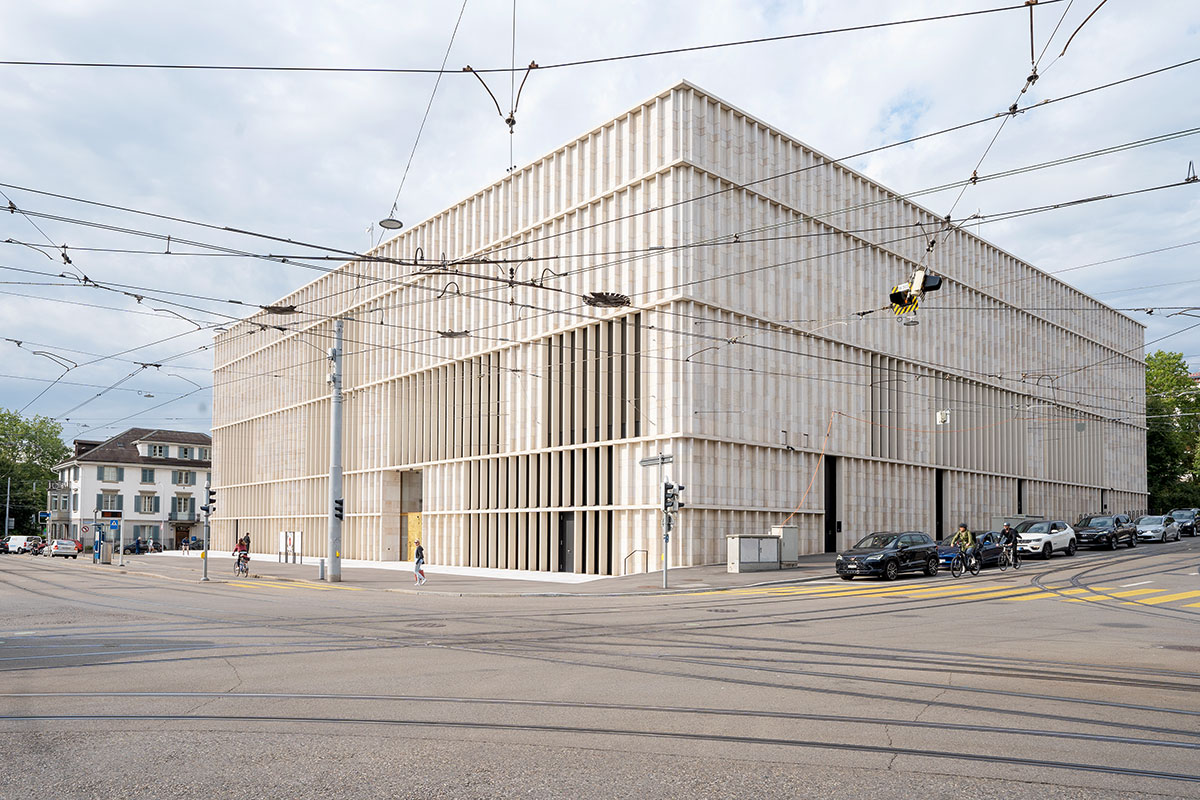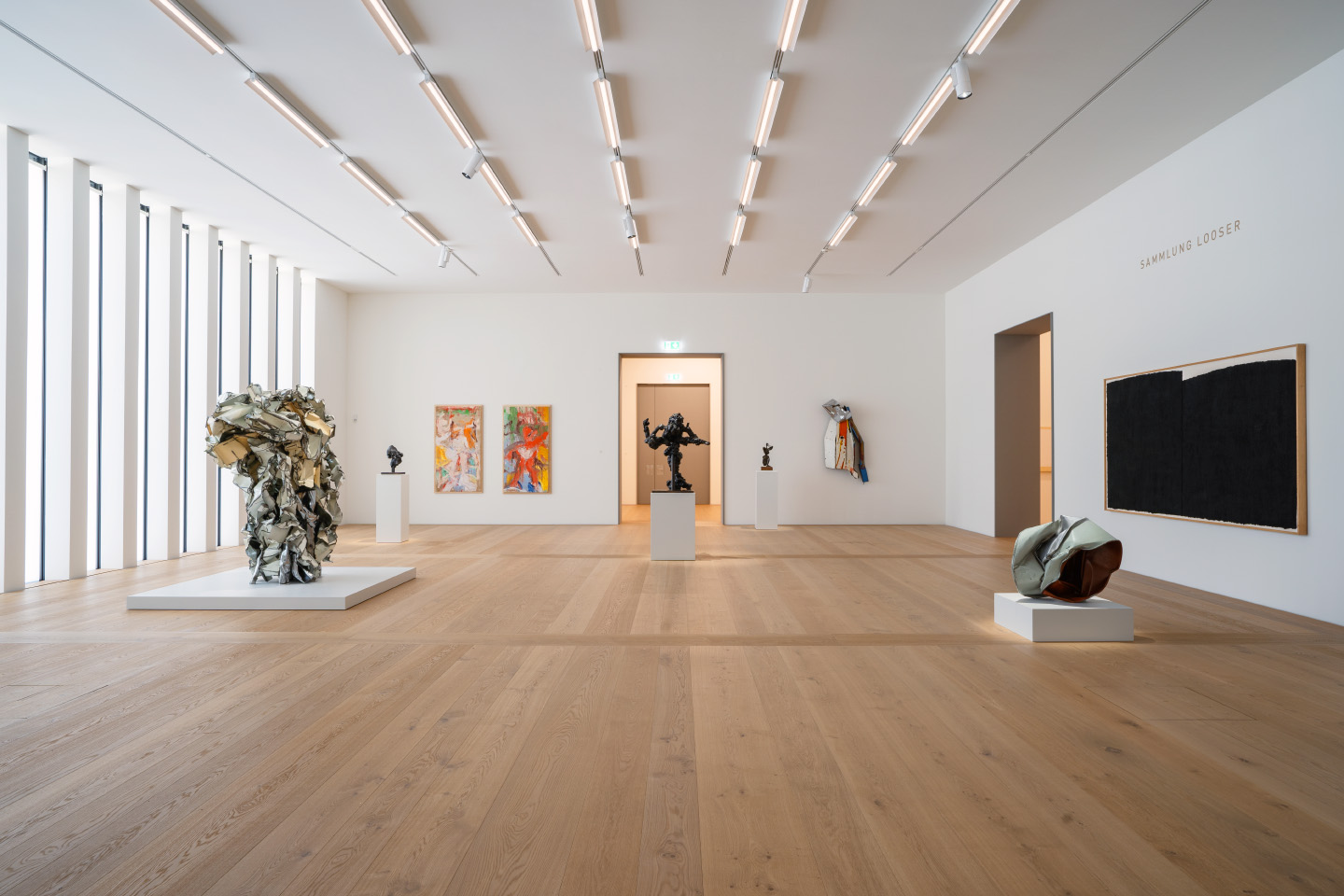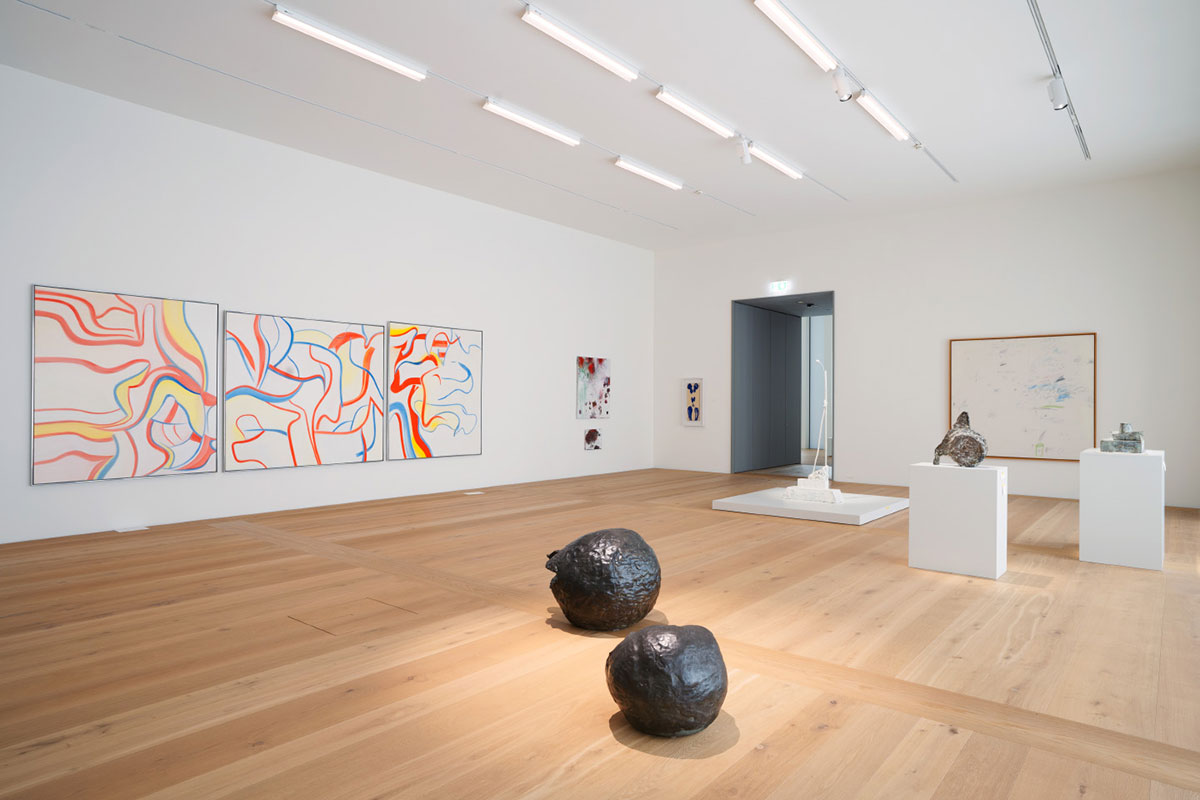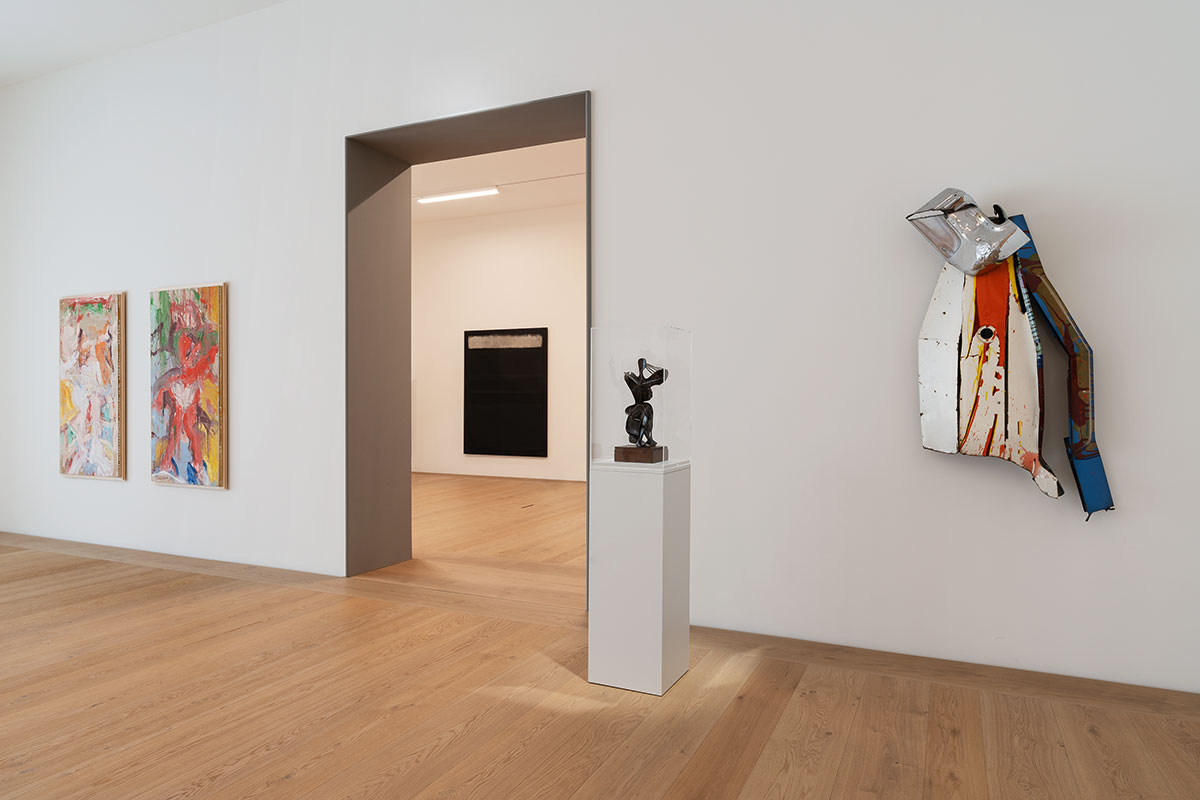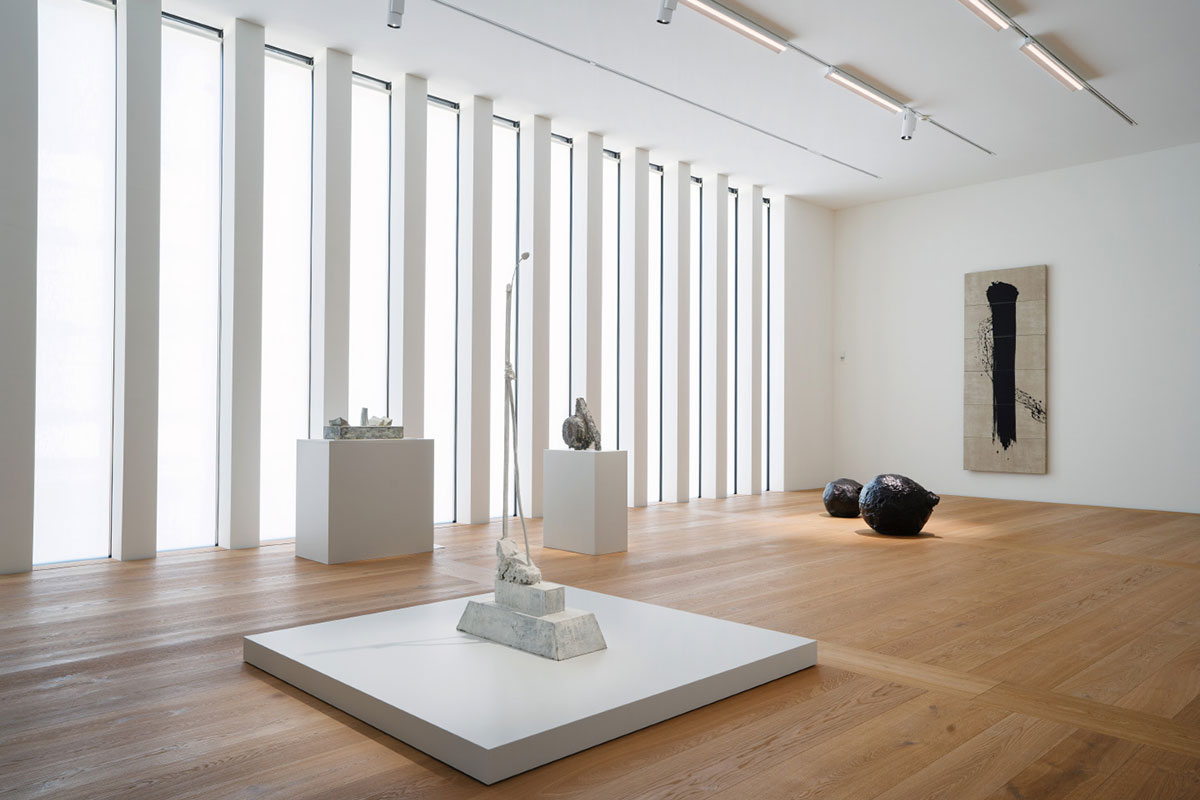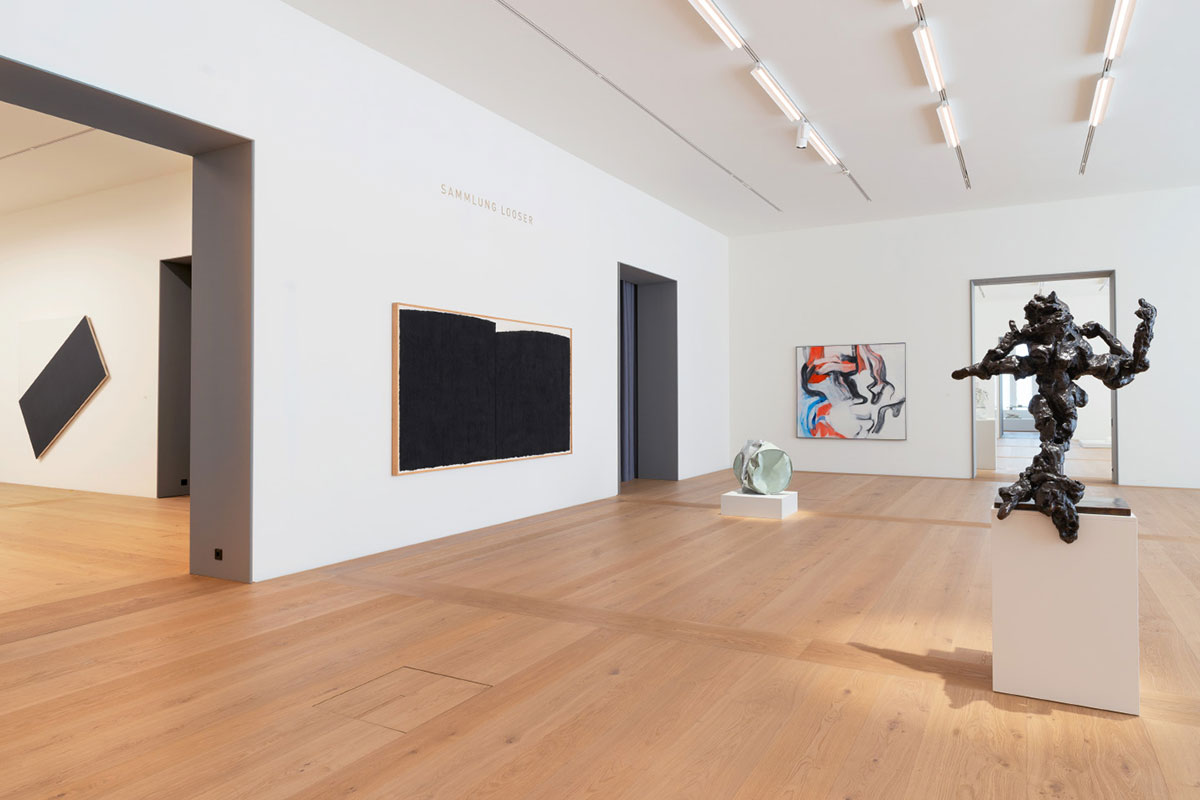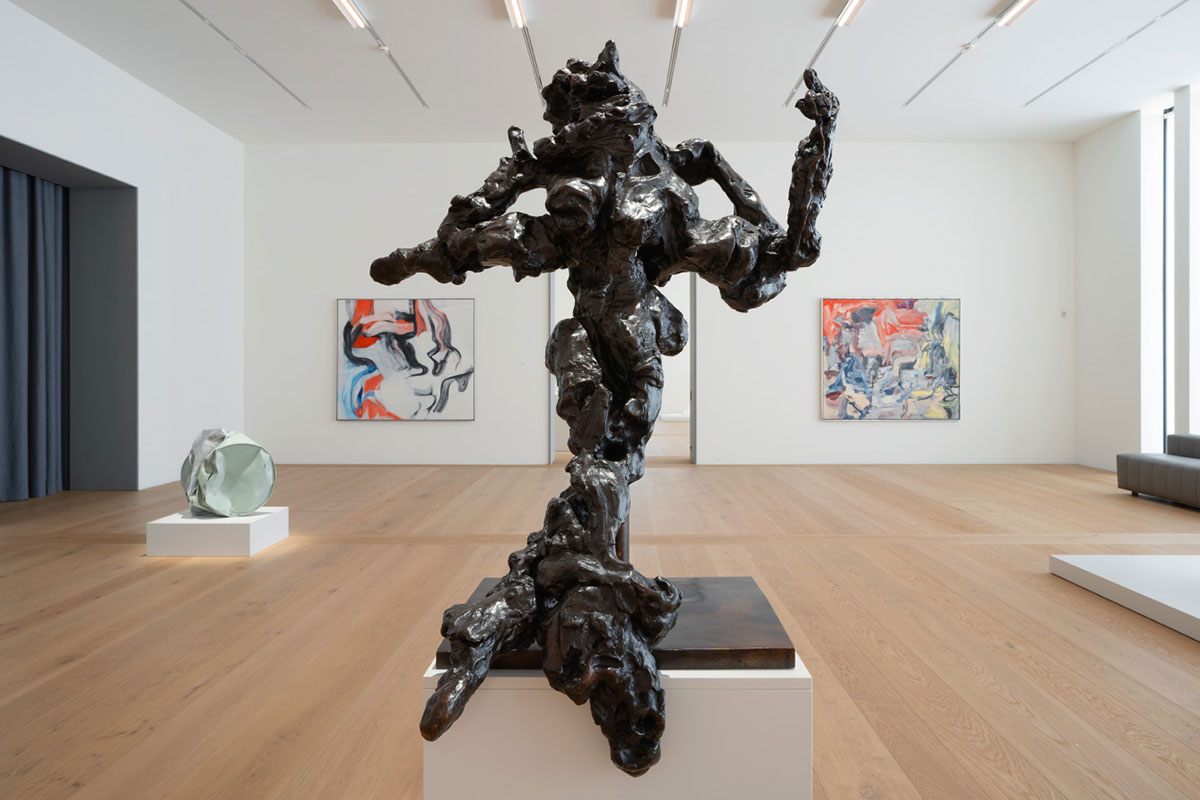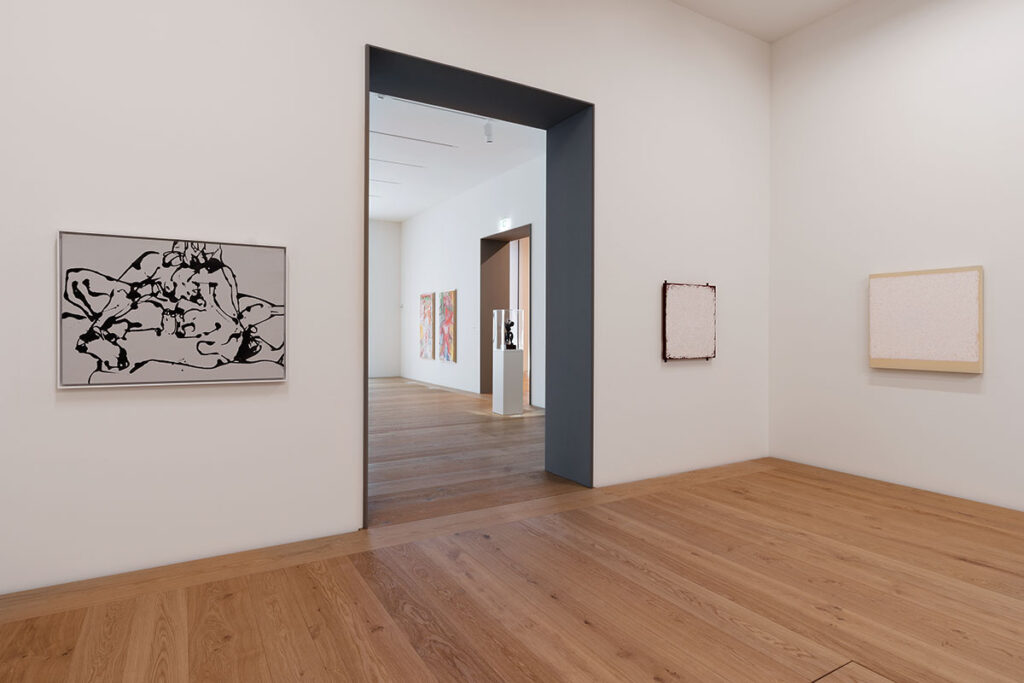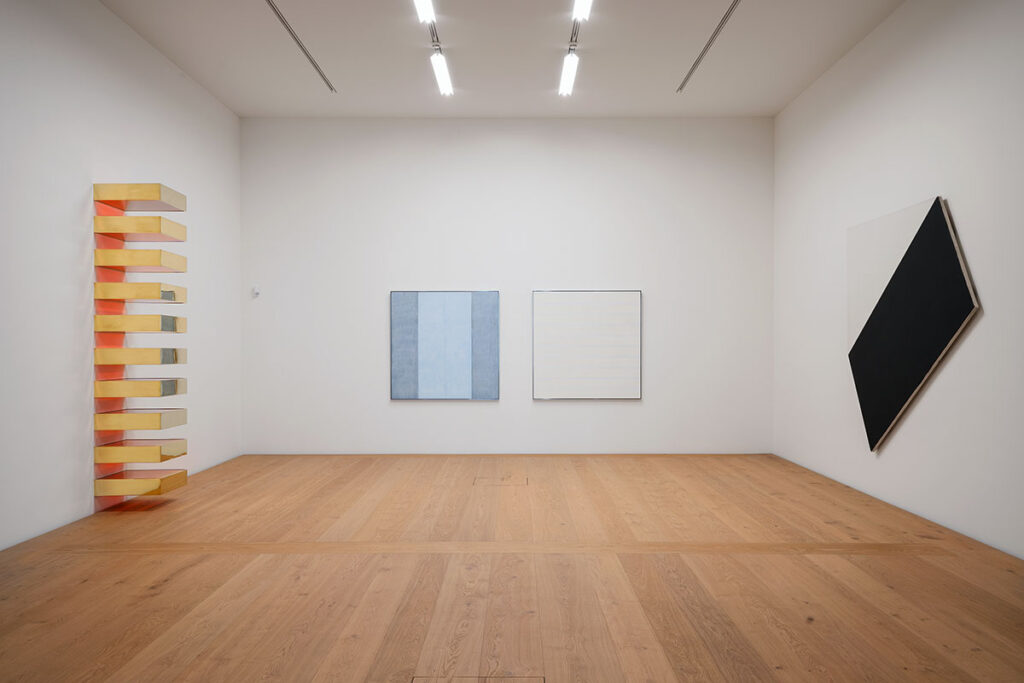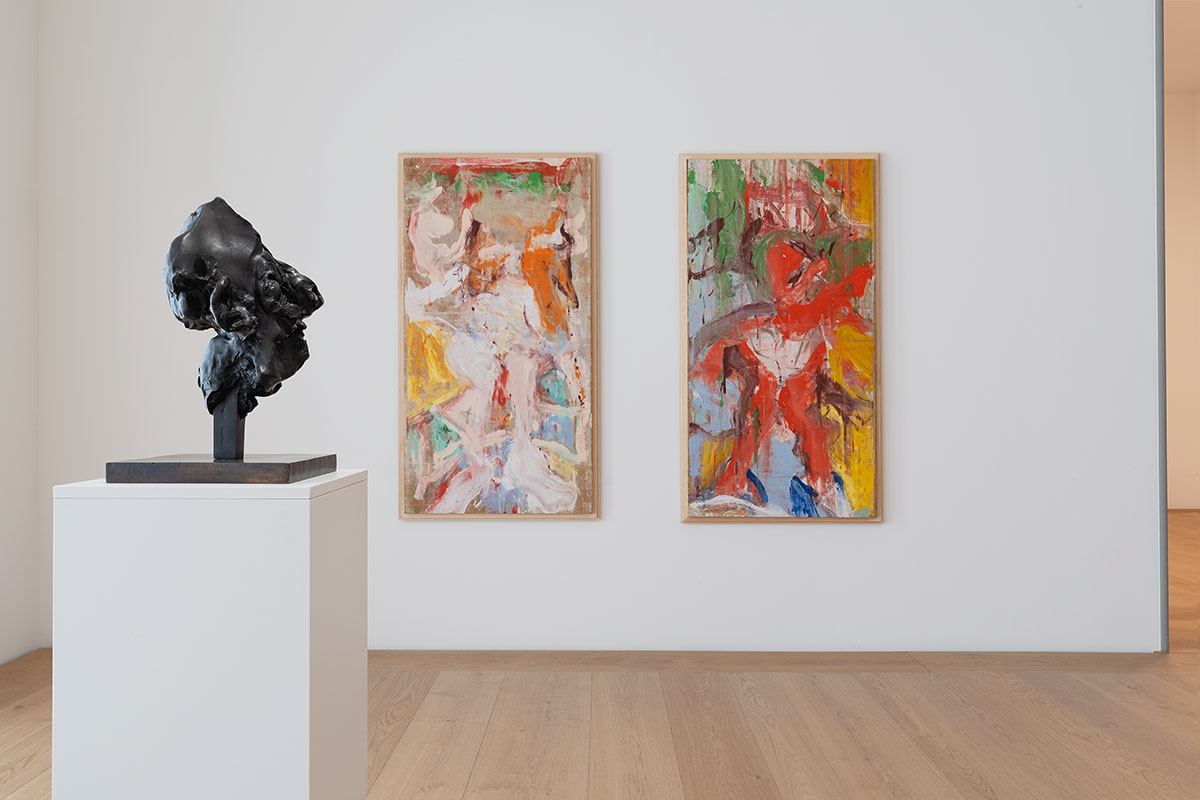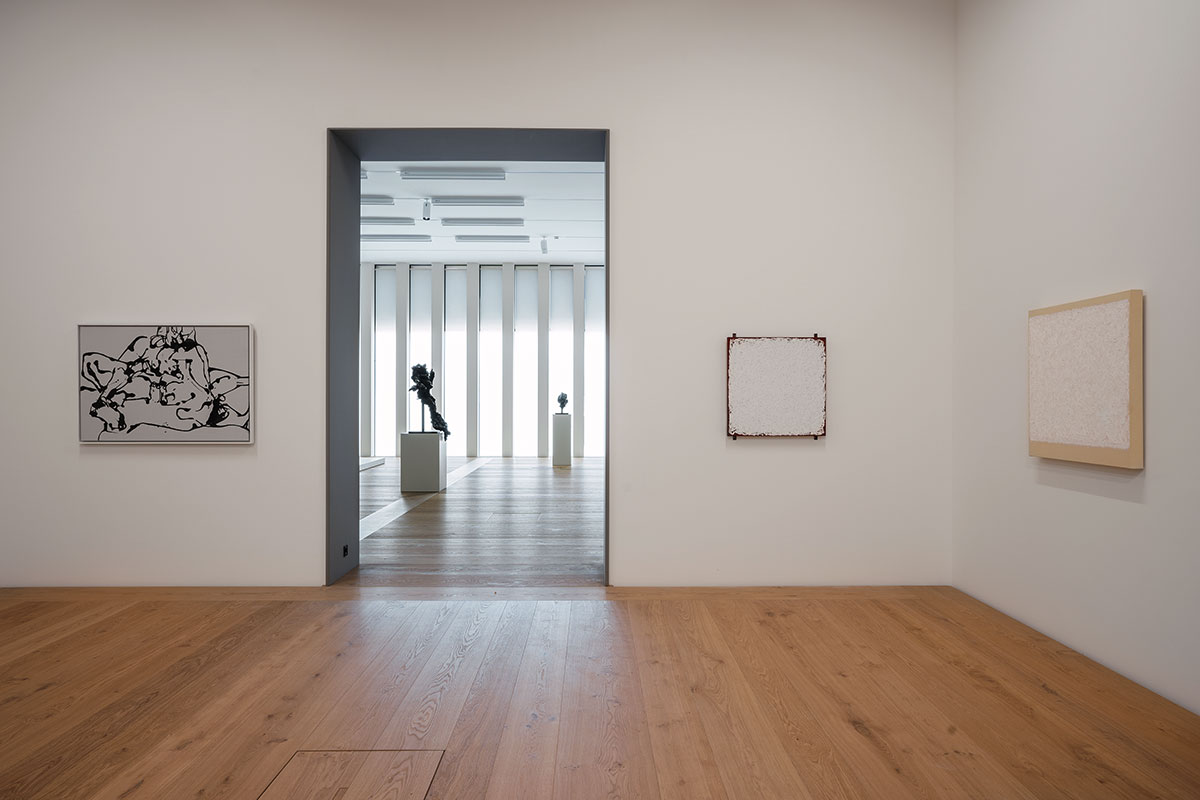The COLLECTION HUBERT LOOSER in the Chipperfield Building of the Kunsthaus Zürich
The COLLECTION FONDATION HUBERT LOOSER in Switzerland is one of the most outstanding private collections of modern and contemporary art in the European area. Its main focuses are on Surrealism, Abstract Expressionism, minimal art and arte povera.
An elemental character of the Hubert Looser Collection is the dialogue that is generated by the inter-communication within the artworks, within constellations that transcend ‘isms’ and media borderlines; also the transatlantic interrelationship between Europe and the USA. The painterly gesture, the line, materiality, process and minimalism are the thematic focuses of the collection. Sensuous language of forms in the figurative idiom meets spiritual formulations.
Hubert Looser started collecting art in the 1960s. He started off mainly with Swiss formations of Surrealism and Informel before acquiring more and more international art ranging from Pablo Picasso to Willem de Kooning. Hubert Looser lives with his art, installs it as in a museum in the private rooms and grounds of his house on Zürichberg. It is his wish to share his passion for art with the general public. After ending his collecting activities he is transferring the major works to the Kunsthaus Zürich and showing them in the rooms of the new Chipperfield Building.
Room I: Surrealism and Abstract Expressionism
David Smith’s Woman Music, 1944, is one of the American sculptor’s outstanding Surrealist sculptures. Biomorphic forms define a lyrically fine-tuned figuration consisting of lines and planes. Smith is represented in the adjoining room with the drip painting Untitled (Nude), 1964, from his Abstract Expressionist phase. David Smith is best known for his wrought-steel sculptures in Abstract Expressionist style.
Willem de Kooning has always found an important place in his art for the figure and the human body. In the early seventies he created bronze sculptures showing the process of formation and deformation. Head III, 1973, and Hostess, 1973, correspond to the two portrait-format works on paper, painted more or less contemporaneously. Sensuous bodies mingle in painterly diffusion with the picture ground.
Willem de Kooning’s painting of 1977 belongs to the Abstract Expressionist’s mature, late oeuvre. The picture is the result of a complex painting process: creamy, delicate traces of paint mingle with the translucid, shimmering segment on the picture surface. Flickering impressions of a landscape area, light and atmosphere are integrated into a painting process that is per se abstract.
Chamberlain’s monumental sculpture Archaic Stooge, 1991, is juxtaposed to de Kooning’s abstract landscape of 1977 and the light-imbued painting of 1982 with dynamic black loops and reddish-blue colour segments. The convolutions and demolishing of the automobile parts are rendered in sculptural brushstrokes of vibrational impact. The interplay between painterly surface, depth and graphic black contour strikes up a precise interplay with the pictures in the background. Chamberlain is one of the great sculptors of Abstract Expressionism.
Richard Serra is the second great abstract sculptor, represented with one work in the main room. The work on paper Finkl-forge, 1991, leads in its aesthetic to the minimalist formations in the adjoining room. Serra uses robust physical pressure to apply the black oil crayon block onto the sheet of paper. The two massive black areas collide with momentous sculptural monumentality.
Room II: Minimalism
Donald Judd’s work from the Stacks series is one of the icons of minimal art and defines the serial and objective character of this art form. Nonetheless, the cool austerity of the minimalist sculpture is warmed by the brass/gold-coloured tone of the vertically stacked squares and their rosé-coloured acrylic panels.
Ellsworth Kelly, pioneer of the minimal art movement, bequeathed an objective character to the panel picture in his painting oeuvre. The originally rectangular format is transformed into a shaped canvas, as with White Triangle with Black, 1976, which consists of a rectangle and a triangle.
Agnes Martin transforms grid and stripe systems into sensitive and subjective pictures that exhale pure painting. Light-imbued yellow and blue tones flicker in horizontal paths on the square canvas.
Robert Ryman can be aligned with the puristic painters of post-war modernism and contemporary art. Ryman has committed himself since the 1960s to the colour of white as neutral colour, which he applies onto square painting grounds. His monochrome works are painterly explorations of radical minimalism.
Room III: Figure and Line
Picasso’s folding sculpture Sylvette, 1954, unites painting, drawing and sculpture in one. The striking feature here is the graphic system of black lines, representing the girl in stylised form on the main viewing side of the metal sculpture. The figurative, linear composition corresponds to the meandering and painterly linear form in Willem de Kooning’s picture next to it.
Like a profane winged altarpiece, de Kooning’s tripartite work of 1985 extends across the wall, a triptych with radiant sensuality. The graphic lines, organic and tendril-like, ramify into hovering structures on dazzling white, revealing spaces, liberating the picture with radiant openness.
Cy Twombly belongs to the generation of post-Abstract Expressionists. The American artist distances himself from the robust expressionism of dripping and brushstroke methods by using a scratched drawing technique. This technique shifts to and fro between abstract tracing, sign-setting and writing. Literary, symbolic statements and processual idiosyncrasy are layered on top of one another.
In the 1980s Twombly concentrated on an ever more pastose and watery painting style. Landscape associations are conjured up: thick forests and swampy pools.
Cy Twombly’s sculptures take effect at first glance as amorphous clumps knocked together out of everyday materials, bandaged up in seemingly improvised fashion, daubed with gypsum, also cast in bronze. These sculptures and their rough surface character recall starkly weathered archaeological finds. Time seems to have left its traces in these ruins.
Fabienne Verdier’s Abstract Expressionist painting L’Un, 2007, pays homage to Twombly’s radiant white sculpture Untitled, 1987. Using a singular gesture of the brush, Verdier engages with the vertical axis of the three-dimensional and vegetal- anthropomorphic work.
Yves Klein’s figuration is a direct print of the female body on canvas. The body becomes an actionist brush, the artist is the stage director. The “living brush” forms dematerialise into auratic signs in glowing blue.
Lucio Fontana’s sculptures are results of the process of hollowing out the sculptural interior space. The massive globes are earth-bound elements and diametrically opposed to his concetto spaciale paintings, which define the cosmic space behind the canvas.
Further formations in the Hubert Looser Collection – including Arshile Gorky, Sean Scully, Brice Marden, Giuseppe Penone, Jasper Johns, Anselm Kiefer, Al Taylor – will be presented in future exhibitions in these rooms.
Florian Steininger
For visits and guided tours, please contact the Kunsthaus Zürich website.
